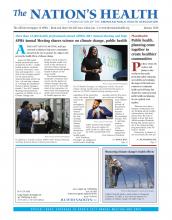A neighborhood’s wealth and the resources it offers pregnant women can influence birth outcomes, according to a study published in October in SSM-Population Health.
Researchers used electronic birth certificates to analyze the birth outcomes of more than 1.2 million babies born in New Jersey from 1996 to 2006. Information from birth certificates was evaluated along with census data and other indicators of neighborhood affluence or disadvantage.
In more affluent neighborhoods, babies were less likely to have low birthweight and preterm birth, the latter of which is the leading risk factor for infant mortality in the U.S., the study noted. The positive effect of neighborhood affluence was identified across the board for white, black, Asian and Hispanic women, with the strongest association between neighborhood affluence and poor birth outcomes seen among white women. While living in a disadvantaged neighborhood did not have a significant effect on poor birth outcomes for Asian and white women, such a link was determined among black and Hispanic women.
“Neighborhood affluence is a sociological construct that signals the presence of local institutions — health-related or otherwise — that can stabilize a community and meet the needs of all residents, regardless of an individual’s own socioeconomic resources,” lead study author Jennifer Kane, PhD, assistant professor of sociology at the University of California-Irvine, told The Nation’s Health.
Such institutions, she said, may include prenatal health clinics or stores with a range of healthy foods. The built environment also plays an important role in birth outcomes, Kane said, with safe spaces and facilities for recreation key for encouraging physical activity among pregnant women. Resources that promote healthy lifestyles can also help women develop healthy coping mechanisms and other behaviors during pregnancy, she added.
“Studies have shown that regular physical activity can reduce the urge to smoke and minimize weight gain after smoking cessation,” Kane said. “Therefore, such improvements in the built environment may be particularly useful for helping women achieve their cessation goals during pregnancy.”
In affluent and disadvantaged neighborhoods alike, many women were found to smoke at some point in their pregnancy. While women even in more affluent neighborhoods smoke, they have greater access to cessation resources, Kane said. In addition, the institutional resources that are found in disadvantaged neighborhoods may not have the capacity to help pregnant women successfully quit smoking.
Public health workers can advocate for high-quality institutional resources in disadvantaged neighborhoods to improve birth outcomes, Kane said.
“Public health workers could redouble efforts to ensure a sufficient level of personnel, resources and facilities are available in low-affluent, resource-poor communities,” she said. “If such institutions are stably funded over time, residents in low-affluent, resource-poor communities could grow to rely upon the resources and services provided therein.”
For more information, visit https://www.sciencedirect.com/science/article/pii/S2352827317300381?via%3Dihub.
- Copyright The Nation’s Health, American Public Health Association









